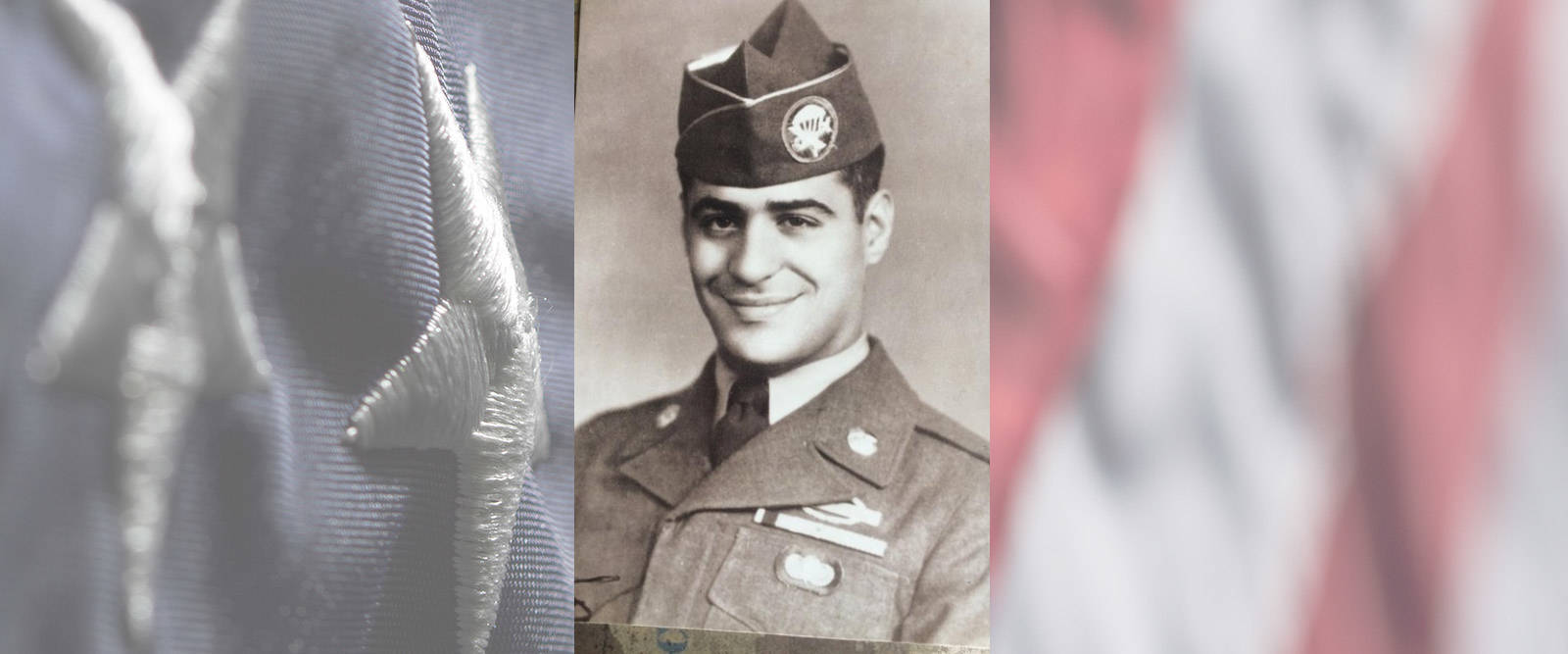U.S. Army Korean War Hobart, IN Flight date: 09/12/18
By Len Sherwinski, Honor Flight Chicago Veteran Interviews Volunteer
Private First Class George Logothetis is proud of his Greek heritage and proud to have served in the U.S. Army. His parents emigrated to the United States and as a boy George was always fascinated by the pictures and stories of the WWII Army paratroopers. After high school, when he decided to enlist during the Korean War, he volunteered to become a paratrooper, much to the dismay of his mother. But George was, and still is, very strong willed and he knew this was what he wanted to do. George and his brother Spiro both served during the Korean War, the first generation of his family to serve in the U.S. military.
“Never be on time” is one thing George says he learned in the military. “They make you hurry up and wait anyway.” He also learned to sleep whenever he could because you are always being awakened by something or someone. He recalls that when he returned from the military, he told his mother to “Wake me up every two hours so I can go back to sleep.”
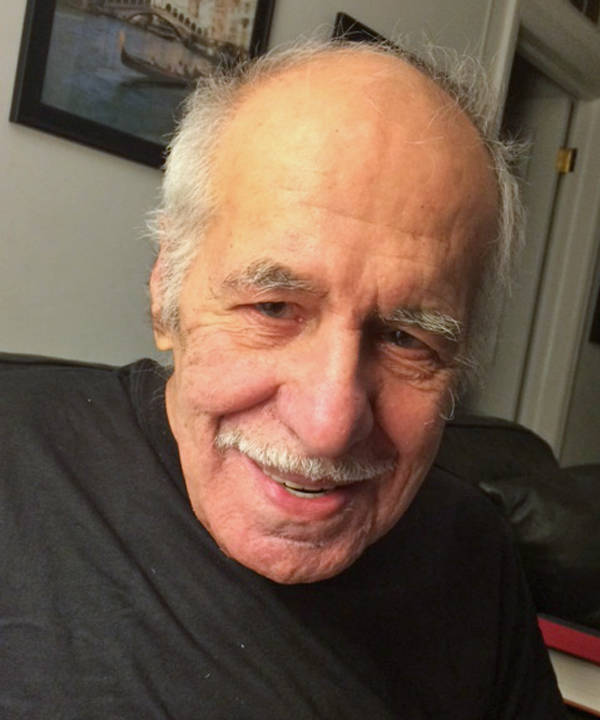
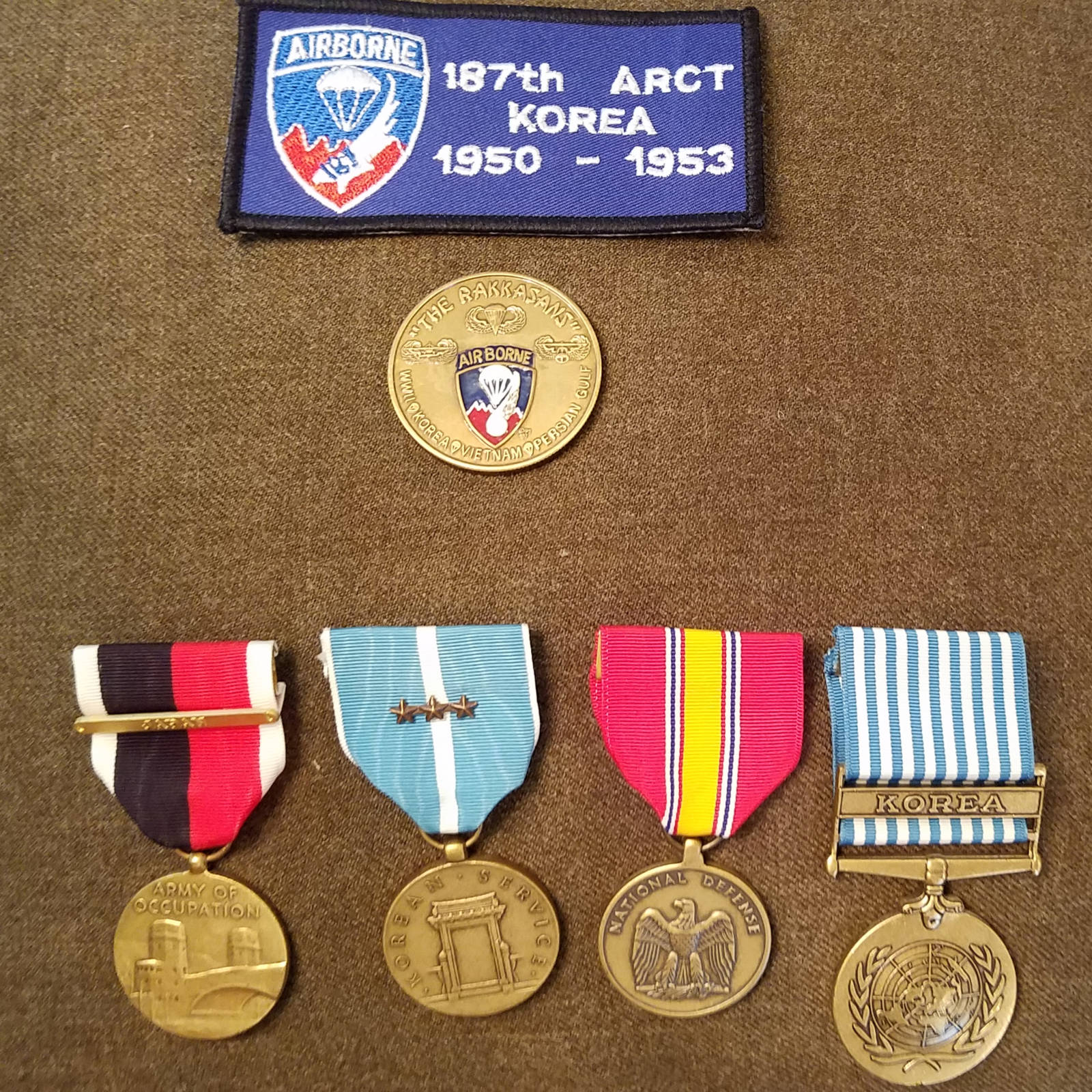
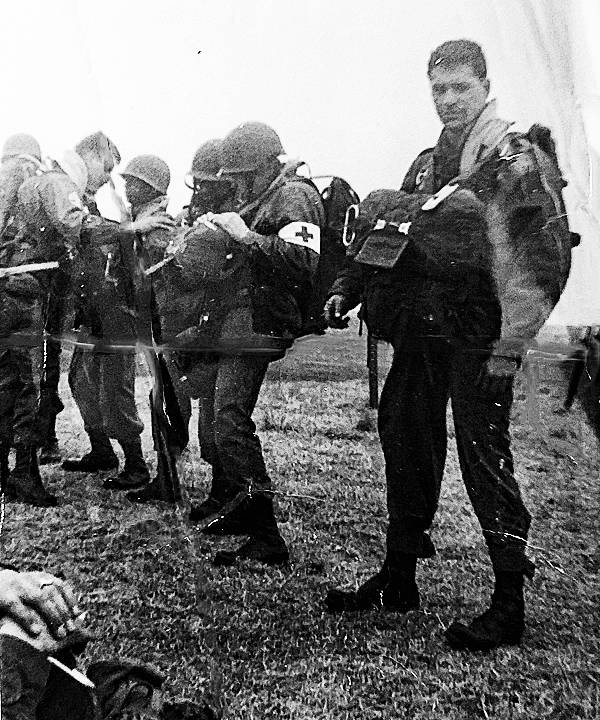
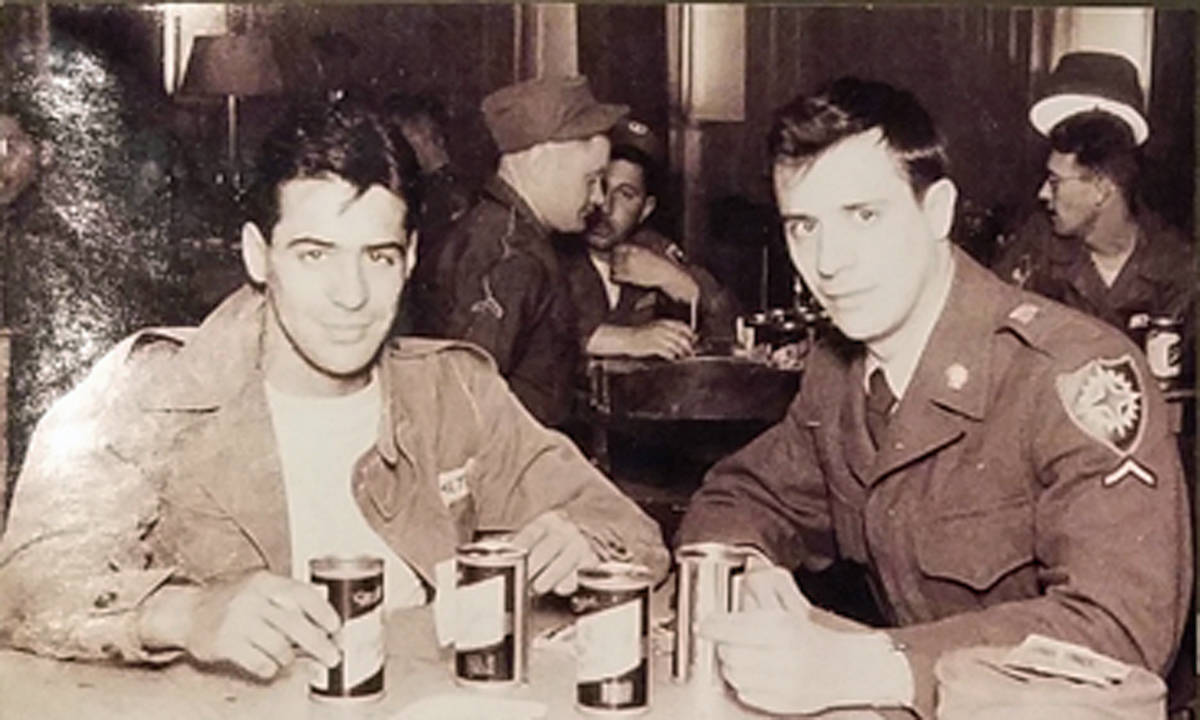
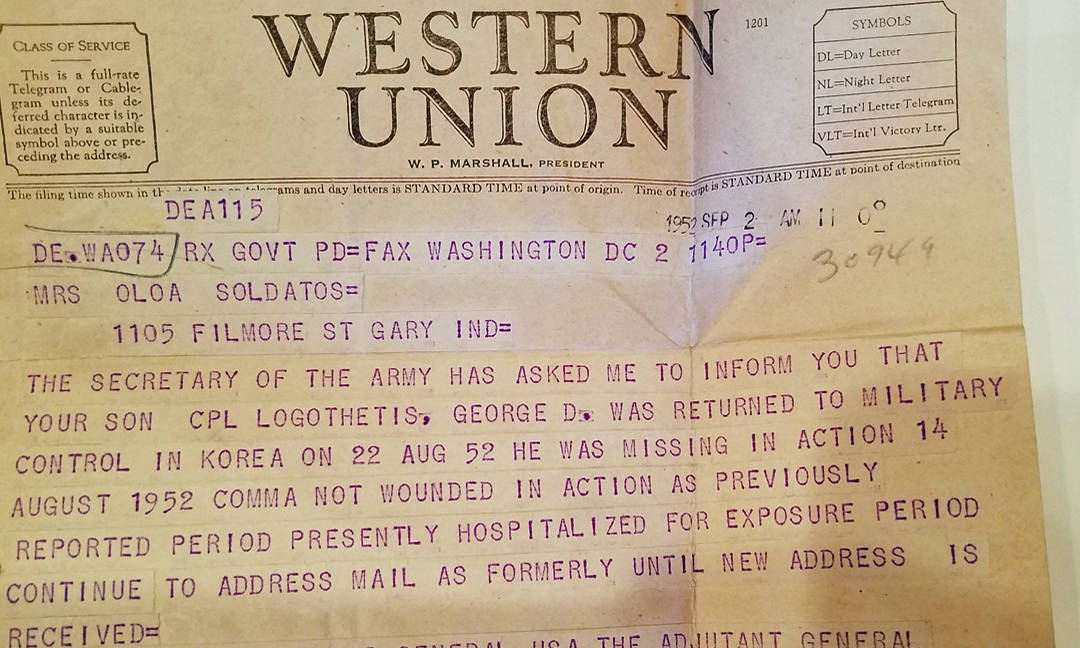
George began his journey in the military shortly after graduating from Froebel High School in Gary, Indiana in 1950. He had been working at US Steel in Gary as a laborer during the summers. When he graduated, George told his boss he was ready for a real job. When George was told to grab his shovel and keep working, strong-willed George quit. After a few months without work, he enlisted in the Army in May of 1951. His induction and training took him from Fort Benjamin Harrison, IN to Fort Custer, MI to Camp Breckinridge, KY to Fort Benning, GA and then to Fort Lewis, WA for his overseas assignment. As mentioned, he was on quite a military journey and this was just the beginning.
Throughout this journey, George concluded that the military had very little logic in how they assigned an MOS (military occupational specialty) to a soldier, even if he had other skills from civilian life. He encountered cooks who were drivers and guys giving innoculations who probably were working garbage detail the night before. His favorite was a guy who was assigned as the “liquor sergeant.” All of this did not set well with George, but he knew this was going to be the next 3 years of his life, so he resigned himself to making the best of it. Besides, he knew what he was going to be doing and couldn’t wait to get his first paratrooper assignment. In all, he would complete 32 jumps.
Traveling to Tokyo and then to Korea, George was assigned to the 187th ARCT (Airborne Regimental Combat Team) as a paratrooper/infantryman. George says his real MOS was an infantryman; being a paratrooper was “just another way to get to work.” The 187th had been in and out of Korea since 1950, but when George arrived in 1952, the 187th was assigned a very unique and important mission. They were assigned to assist in suppressing a Korean POW rebellion at the Geoje POW Camp (aka Koje-do Pow Camp). The prisoners had seized the camp commander Brigadier General Francis Dodd, holding him hostage for four days. George recalls being on Koje Island for this incident and standing on one side of the barbed wire fences to keep the prisoners from getting out, while the Korean prisoners fought to keep the 187th from getting into the POW Camp. The POW’s had made gasoline bombs out of C-Ration cans and also created makeshift gas masks as well.
George spent 18 months overseas and 9 of those months on-line in a combat zone. His days consisted of missions and maneuvers designed to flush out the enemy or assist other U.S. units. On one such mission, they were sent to help a trapped platoon. George was selected as the scout, requiring him to go down a mountain and into a valley ahead of his platoon. He endured enemy fire and lost sight of his platoon because of all the smoke and haze. Suddenly he was pinned down and had to quickly find foliage to hide in. For seven days he remained alone, MIA and in no man’s land, not knowing what direction the next enemy fire would come from. At one point, he could see the North Korean soldiers come within three feet of his position. Not wanting to give away his position, George “froze in that spot for the next few days.” Surviving on little water from streams and no food, he was finally able to climb up a hill where he located a foxhole. From his vantage point he was able to spot a patrol from his company within 24 hours. He then joined them and they took him back to the Aid Station. The first thing they asked him was “Do you have cigarettes?” In those days, a GI could survive on little water or food, but cigarettes were a must.
George was sent to the Battalion Aid station and treated for exposure but returned to his unit within a few days. As scary as this was for George, his mother was also scared by the telegrams and letters she received regarding her son’s status. First she was told he was wounded, then that he was missing in action, but that he was ok. It was a stressful time filled with emotions for a mother with two sons serving overseas, with one son in a combat zone. Fortunately George and his brother Spiro, who was with the Army Signal Corps as a radioman in Japan, both safely returned home to their mom.
As George continued his service, he learned to use a trigger wire to fire a 50mm machine gun at night so as not to attract fire power to himself; listened to propaganda in Chinese over loudspeakers; participated in coordinated Army and Navy shellings of targets called TOT (Time On Target) maneuvers and volunteered to go back into combat to get the 4 points he needed to go home. Through it all, he “saw the best of people and the worst of people.”
Upon returning home, George was determined to get an education. He always had a natural talent for drafting, so he used the G.I. Bill to get a Civil Engineering degree. He went to night school at Purdue and then later completed his degree at Tri-State College (now called Trine University) in Angola, IN, graduating in December, 1960. He then returned to Gary, IN where he met Mary Lou. They married in 1963 and have three children and two grandchildren. George went on to receive an M.B.A. at Indiana University in 1978. George held engineering positions at American Bridge, Interlake Steel and Superior Construction, retiring in 1994.
Thank you George, Honor Flight Chicago is inspired by your story. Enjoy your well-deserved day of honor.



